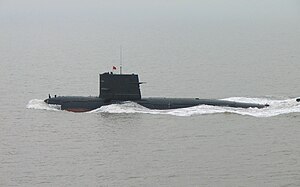트래피스트-1h
TRAPPIST-1h TRAPPIST-1h에 대한 아티스트의 인상. | |
| 검출 | |
|---|---|
| 검출일 | 2017 |
| 교통편 | |
| 궤도 특성 | |
| 아파스트론 | 0.06229 AU |
| 근일점 | 0.06158 AU |
| 0.06193488 ± 8.0e-07[1] AU | |
| 편심 | 0.00567 (±0.00121)[1] |
| 18.868+0.008 −0.009[1] d | |
| 기울기 | 89.796(± 0.023)[2] |
| 별 | 트래피스트-1[3] |
| 물리적 특성 | |
평균 반지름 | 0.773 +0.026 −0.027[1] REarth |
| 덩어리 | 0.331 +0.056 −0.049[1] MEarth |
평균 밀도 | 3.97g/cmcm3−3 |
| 0.555g | |
| 온도 | Teq: 169.2 ± 2.4 K (-103.95 ± 2.40 °C, -155.11 ± 4.32 °F)[2] |
TRAPPIST-1h는 물병자리 방향으로 지구로부터 39광년(12파섹) 떨어진 초저온 왜성 TRAPPIST-1 주위를 도는 외계 행성이다.이 행성은 [4][5]스피처 우주 망원경의 관측을 통해 이 별 주위를 도는 네 개의 새로운 외계 행성 중 하나였다.2017년과 2018년 동안 더 많은 연구가 물리적 매개변수를 개선할 수 있었다.
행성계에서 가장 바깥쪽에 있는 행성은 대략 지구 질량의 3분의 1이며, 크기는 약 77%이다.상대적으로 밀도가 낮다는 것은 [6]이 행성은 다른 행성들과 마찬가지로 물이 풍부하다는 것을 나타냅니다.
물리적 특성
질량, 반지름 및 온도
TRAPPIST-1h의 반지름은 0.773입니다.REarth, 질량 0.331M지구 표면 중력의 약 56%입니다Earth.밀도는 3.97g/cm3로 화성과 매우 유사하다.이 밀도를 고려할 때, 질량의 약 5%가 두꺼운 얼음 [6]껍데기 형태인 물이어야 하며, 지구가 받는 별의 플럭스는 약 13%에 불과하기 때문이다.평형 온도는 169K(-104°C; -155°F)로 지구의 남극과 유사하다.
호스트 스타
트라피스트-1h는 초저온 왜성 트라피스트-1 주위를 돌고 있다.0.121입니다R☉ 및 0.089M온도는 2511 K이고 나이는 30억 년에서 80억 년 사이이다☉.비교하자면, 태양의 온도는 5778 K이고 나이는 약 45억 살이다.TRAPPIST-1은 또한 매우 어둡고, 밝기는 태양의 약 0.0005배이다.이 별의 겉보기 등급은 18.8입니다. 즉 밝게 보이는지는 18.8입니다.그래서 육안으로 볼 수 없을 정도로 어둡다.
궤도
TRAPPIST-1h는 항성계에서 가장 먼 행성으로 알려져 있음에도 불구하고 공전주기는 18.868일이고 공전반경은 0.0619AU이다.이것은 심지어 수성의 태양 궤도보다 작다 (약 0.38AU이다.[7]
안정된 액체 물
TRAPPIST-1h의 궤도는 별의 서리선 부근에 있지만, 2021년과 [11]2022년[10] 관측 결과 그러한 대기의 존재가 강하게 부정되었지만, 원시적이거나 [7]내부 가열과 결합된 지속적인 가스 방출로 인해 H가2 풍부한 대기 아래[8][9] 액체 상태의 물이 있을 수 있다.그것은 또한 잠재적으로 조석 가열의 방법으로 지표면 아래 바다를 포함할 수 있으며, 이는 간헐천 [6]분출의 형태로 저온 현상(cryovolcanism)을 초래할 수 있다.
「 」를 참조해 주세요.
레퍼런스
- ^ a b c d e f Grimm, Simon L.; Demory, Brice-Olivier; Gillon, Michael; Dorn, Caroline; Agol, Eric; Burdanov, Artem; Delrez, Laetitia; Sestovic, Marko; Triaud, Amaury H.M.J.; Turbet, Martin; Bolmont, Emeline; Caldas, Anthony; de Wit, Julien; Jehin, Emmanuel; Leconte, Jeremy; Raymond, Sean N.; Van Grootel, Valerie; Burgasser, Adam J.; Carey, Sean; Fabrycky, Daniel; Heng, Kevin; Hernandez, David M.; Ingalls, James G.; Lederer, Susan; Selsis, Franck; Queloz, Didier (2018). "The nature of the TRAPPIST-1 exoplanets". Astronomy & Astrophysics. 613: A68. arXiv:1802.01377. Bibcode:2018A&A...613A..68G. doi:10.1051/0004-6361/201732233.
- ^ a b Delrez, Laetitia; Gillon, Michael; H.M.J, Amaury; Brice-Oliver Demory, Triaud; de Wit, Julien; Ingalls, James; Agol, Eric; Bolmont, Emeline; Burdanov, Artem; Burgasser, Adam J.; Carey, Sean J.; Jehin, Emmanuel; Leconte, Jeremy; Lederer, Susan; Queloz, Didier; Selsis, Franck; Grootel, Valerie Van (2018). "Early 2017 observations of TRAPPIST-1 with Spitzer". Monthly Notices of the Royal Astronomical Society. 475 (3): 3577–3597. arXiv:1801.02554. Bibcode:2018MNRAS.475.3577D. doi:10.1093/mnras/sty051.
- ^ Van Grootel, Valerie; Fernandes, Catarina S.; Gillon, Michaël; Jehin, Emmanuel; Scuflaire, Richard; et al. (2018). "Stellar parameters for TRAPPIST-1". The Astrophysical Journal. 853: 30. arXiv:1712.01911. Bibcode:2018ApJ...853...30V. doi:10.3847/1538-4357/aaa023.
- ^ "Temperate Earth-Sized Planets Found in Extraordinarily Rich Planetary System TRAPPIST-1". SpaceRef. 22 February 2017. Retrieved 11 February 2017.
- ^ "NASA telescope reveals largest batch of Earth-size, habitable-zone planets around single star". Exoplanet Exploration: Planets Beyond our Solar System (Press release). Retrieved 22 February 2017.
- ^ a b c Quick, Lynnae C.; Roberge, Aki; Barr Mlinar, Amy; Hedman, Matthew M. (18 June 2020). "Forecasting Rates of Volcanic Activity on Terrestrial Exoplanets and Implications for Cryovolcanic Activity on Extrasolar Ocean Worlds". Publications of the Astronomical Society of the Pacific. 132 (1014). doi:10.1088/1538-3873/ab9504.
- ^ a b Luger, Rodrigo; Sestovic, Marko; Kruse, Ethan; Grimm, Simon L.; Demory, Brice-Olivier; et al. (2017). "A terrestrial-sized exoplanet at the snow line of TRAPPIST-1". Nature Astronomy. 1: 0129. arXiv:1703.04166. Bibcode:2017NatAs...1E.129L. doi:10.1038/s41550-017-0129.
- ^ Bourrier, Vincent; de Wit, Julien; Jäger, Mathias (31 August 2017). "Hubble delivers first hints of possible water content of TRAPPIST-1 planets". www.SpaceTelescope.org. Retrieved 4 September 2017.
- ^ PTI (4 September 2017). "First evidence of water found on TRAPPIST-1 planets - The results suggest that the outer planets of the system might still harbour substantial amounts of water. This includes the three planets within the habitable zone of the star, lending further weight to the possibility that they may indeed be habitable". The Indian Express. Retrieved 4 September 2017.
- ^ Near-infrared transmission spectrum of TRAPPIST-1 h using Hubble WFC3 G141 observations, 2021, arXiv:2112.05510
- ^ HST/WFC3 transmission spectroscopy of the cold rocky planet TRAPPIST-1h, 2022, arXiv:2203.13698






